The European Medicines Agency (EMA) and Heads of Medicines Agencies (HMA) released the final guidance on Good Pharmacovigilance Practice (GVP) Module XVI Risk Minimization Measures Revision 31 and Module XVI Addendum II – Methods for Evaluating Effectiveness or Risk Minimization Measures2 on 6 August 2024.
This revised guideline differs significantly from Revision 2 released in March 2017 and is an essential reference for anyone involved in developing or implementing risk minimization measures or assessing the effectiveness of risk minimization measures.
The guidance is applicable to new applications for marketing authorization, development of new risk minimization measures, and new studies evaluating risk minimization measures for authorized medicinal products but not immediately applicable to existing risk minimization measures and ongoing activities regarding risk minimization measures.
However, when existing risk minimization measures are amended, the revised guidance should be considered and applied if this is considered likely to increase the effectiveness of the risk minimization measure without jeopardizing its familiarity for patients and healthcare professionals using the concerned medicinal product.
Both documents are a welcome update to GVP Module XVI. In particular, the GVP Module XVI Revision 3 provides much needed clarification of risk minimization methods along with some new, clearly understandable concepts including the following high-level highlights:
- Risk Minimization Measures (RMM) are now being considered to consist of two concepts:
- RMM messages
- RMM tools which are further sub-divided into
- Educational/safety advice tools
- Risk minimization control tools
- Educational/safety advice tools are broken down into the following, and clear guidance is provided as to the content of each:
- Guides for risk minimization for patients or healthcare professionals
- Healthcare professional checklist for risk minimization
- Risk awareness dialogue form/aid
- Patient card
- Patient diary for risk minimization
- Control tools move away from the confusing concepts of controlled access programs and controlled distribution programs but instead a list of control tools is provided:
- Healthcare Professional qualification which is required for the prescribing, dispensing, and/or administration of the medicinal product, and/or for the supervision of the administration by the patient
- Healthcare facility accreditation of the available equipment and qualified healthcare professionals which is required for using the medicinal product at this facility
- Traceability system which is to be completed at dispatch of the medicinal product from the manufacturing site, all distribution points and healthcare facility where the medicinal product is dispensed nor administered
- System for documented exchange of patient information (e.g., results of medical tests) which one healthcare professional is required to receive from another healthcare professional
- Checking for patient certificates of medical interventions which are required for the prescribing or dispensing of the medicinal product.
- Methods for evaluating the effectiveness of risk minimization measures have now been placed in a separate Addendum (Addendum II). This provides significantly more detail around the various approaches to assessing risk minimization effectiveness including the possibility of qualitative research.
GVP Module XVII Revision 3 and Addendum II provides more prescriptive guidance in several areas of risk minimization as compared to Revision 2. UBC’s Risk Management team has experience with all aspects of risk minimization dating back to the era prior to the development of specific guidance’s and is agile at adapting to changes in guidance to deliver an optimal risk minimization approach to meet the needs of all stakeholders.
To learn more about how UBC can help with all aspects of your risk management and risk minimization needs, get in touch with us HERE.
ABOUT UBC: UBC is the leading provider of evidence development solutions with expertise in uniting evidence and access. UBC helps biopharma mitigate risk, address product hurdles, and demonstrate safety, efficacy, and value under real-world conditions. Our combined scientific expertise in pharmacovigilance, risk management, and signal detection and assessment, underpinned by innovative technologies, offer our customers customized solutions generating the relevant insights necessary to make informed decisions earlier, meet stakeholder requirements, and ensure the safety of products.
ABOUT THE AUTHOR:

Janine Collins, MBBS, LLM
Dr. Janine Collins is Vice President, Medical, Scientific & Real-World Research at UBC. She provides leadership, direction, and guidance supporting customers in the creation of core Risk Management Plans and global and local strategy for Risk Management activities. Her experience spans a wealth of therapeutic areas and latterly has focused on several rare diseases in both adults and pediatrics including metabolic disorders, inborn errors of metabolism, neurodegenerative disorders, and pediatric and adult oncology.
REFERENCES:
- European Medicines Agency and Heads of Medicines Agencies, Guideline on good pharmacovigilance practices (GVP) – Module XVI (Rev 3) EMA/204715/2012 Rev 3 of 26 July 2024 https://www.ema.europa.eu/en/documents/regulatory-procedural-guideline/guideline-good-pharmacovigilance-practices-gvp-module-xvi-risk-minimisation-measures-rev-3_en.pdf
- European Medicines Agency and Heads of Medicines Agencies, Guideline on good pharmacovigilance practices (GVP) – Module XVI Addendum II EMA/419982/2019 of 26 July 2024 https://www.ema.europa.eu/en/documents/regulatory-procedural-guideline/guideline-good-pharmacovigilance-practices-gvp-module-xvi-addendum-ii-methods-evaluating-effectiveness-risk-minimisation-measures_en.pdf






